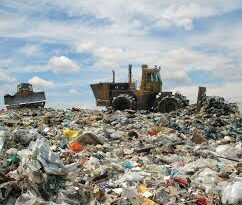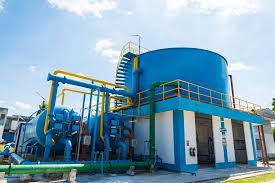Waste Sampling Equipment and Waste Sampling Procedures
Selecting appropriate equipment to sample wastes is a challenging task due to the uncertainty of the physical characteristics and nature of the wastes. It may be difficult to separate, homogenize and/or containerize a waste due to its physical characteristics (viscosity, particle size, etc.).
In addition, the physical characteristics of a waste may change with temperature, humidity or pressure. Waste streams may vary depending on how and when a waste was generated, how and where it was stored or disposed and the conditions under which it was stored and disposed.
Also, the physical location of the wastes or the unit configuration may prevent the use of conventional sampling equipment.
Given the uncertainties that a waste may present, it is desirable to select sampling equipment that will facilitate the collection of samples that will meet the study’s objective, and that will not unintentionally bias the sample by excluding some of the sample population that is under consideration.
However, due to the nature of some waste matrices or the physical constraints of some waste units, it may be necessary to collect samples knowing that a portion of the desired population was omitted due to limitations of the equipment.
Any deviations from the study plan or difficulties encountered in the field concerning sample collection that may have an effect on the study’s objective should be documented in a logbook, reviewed with the analytical data and presented in the report.
Waste Sampling Equipment
Waste sampling equipment should be made of non-reactive materials that will neither add to nor alter the chemical or physical properties of the material that is being sampled. The table below llists some conventional equipment for sampling waste units/ phases and some potential limitations of the equipment.
Read Also : Rationale for Waste Sampling and Techniques
Another reference for selecting sampling equipment is the ASTM, standard guide for selection of sampling equipment for wastes and contaminated media data collection activities, d 6232, most recent version.
Ancillary Equipment for Waste Sampling
In addition to the equipment listed in the table below which provides the primary device used to collect various waste samples, ancillary equipment may be required during the sampling for safety and/or analytical reasons.
Some examples of these types of equipment are glass mixing pans, particle size reducers, remote drum opening devices and spark resistant tools. Any influences that these types of ancillary equipment may have on the data should be evaluated and reported as necessary.
Waste Sampling Procedures
Waste Piles
Waste piles vary in size, shape, composition and compactness, and may vary in distribution of hazardous constituents and characteristics (strata).

These variables will affect safety and access considerations. The number of samples, the type of sample(s), the sample location(s) and interval(s) should be based on the study’s objectives. Commonly used equipment to collect samples from waste piles is listed in Table 2.1. Specific procedures will vary depending on the equipment and objectives of the investigation. All equipment should be compatible with the waste and should be cleaned to prevent cross contamination of the sample.
Surface Impoundments
Surface impoundments vary in size, shape and waste content, and may vary in distribution of hazardous constituents and characteristics (strata).
The number of samples, the type of sample(s) and the sample location(s) and interval(s) should be based on the study’s objectives.
Because of the potential danger of sampling waste units suspected of containing elevated levels of hazardous constituents, personnel should never attempt to sample surface impoundments used to manage potentially hazardous wastes from a boat.
All sampling should be conducted from the banks or piers of surface impoundments. Any exception must be approved by the appropriate site safety officer and/or the occupational health and safety designee (OHSD).
Table: Sampling Equipment for various Waste Units
| Equipment | Waste Units/Phases | Limitations |
| Scoop with bracket/conduit | Impoundments, piles, containers, tanks/liquids, solids, sludges | Can be difficult to collect deeper phases in multiphase wastes. Depth constraints |
| Spoon | Impoundments, piles, containers/solids, sludges | Similar limitations as the scoop. Generally not effective in sampling liquids. |
| Auger | Impoundments, piles, containers/solids | Can be difficult to use in an impoundment or a container, or for solidified wastes. |
| Sediment sampler | Impoundments, piles/solids, sludges | Should not be used to sample solids with dimensions >½ the diameter of the tube. |
| Ponar dredge | Impoundments/solids, sludges | Must have means to position equipment to desired sampling location. Difficult to decon. |
| COLIWASA or drum thief | Impoundments, containers, tanks/liquids | Not good with viscous wastes. Devices ≥ 7’ require 2 samplers to use effectively. |
| DipstickTM/ MucksuckerTM | Impoundments, containers, tanks/liquids, sludges | Not recommended for tanks >11 feet deep. Devices > 7’ require 2 samplers to use effectively |
| Bacon bomb | Impoundments, tanks/liquids | Not good with viscous wastes |
| Bailer | Impoundments, tanks/liquids | Only if waste is homogeneous. Not good with viscous wastes |
| Peristaltic pump with vacuum jug assembly | Impoundments, tanks/liquids | Cannot be used in flammable atmospheres. Not good with viscous wastes. |
| Back-hoe bucket | Piles/solids, sludges | May be difficult to access desired sampling location. Difficult to decon. Can lose volatiles. |
| Split-spoon | Piles/solids | Requires drill rig or direct push equipment. |
| Tot-hammer | Piles, containers/solids | Physically breaks up sample. May release volatiles. Not for flammable atmospheres. |
Drums
Drums are the most frequent type of containers sampled by field investigators for chemical analyses and/or physical testing.
Caution should be exercised by the field investigators when sampling drums because of the potential presence of explosive/flammable gases and/or toxic vapors.
Therefore, the following procedures should be used when collecting samples from drums of unknown material:
Visually inspect all drums that are being considered for sampling for the following:
Pressurization (bulging/dimples)
Crystals formed around the drum opening
Leaks, holes, stains labels, markings
Composition and type (steel/poly and open/bung)
Condition, age, rust and
Sampling accessibility.
Drums showing evidence of pressurization and crystals should be furthered assessed to determine if remote drum opening is needed. If drums cannot be accessed for sampling, heavy equipment is usually necessary to stage drums for the sampling activities.
Adequate time should be allowed for the drum contents to stabilize after a drum is handled.
Identify each drum that will be opened (e.g., paint sticks, spray paint, cones, etc.).
Before opening, ground each metal drum that is not in direct contact with the earth using grounding wires, alligator clips and a grounding rod or metal structure. If a metal drum is in an over- pack drum, the metal drum should be grounded.
Touch the drum opening equipment to the bung or lid and allow an electrical conductive path to form. Slowly remove the bung or drum ring and/or lid with spark resistant tools (brass/beryllium).
Screen drums for explosive gases and toxic vapor with air monitoring instruments as bung or drum lid is removed. Depending on site conditions, screen for one or more of the following:
Radioactivity
Cyanide fumes
Halogen vapours
Ph and/or
Flash point (requires small volume of sample for testing).
Select the appropriate sampling equipment based on the state of the material and the type of container. Sampling equipment should be made of non-reactive material.
Place oil wipe (as necessary), sampling equipment and sample containers near drum(s) to be sampled.
Tanks
Sampling tanks is considered hazardous due to the potential for them to contain large volumes of hazardous materials and therefore, appropriate safety protocols must be followed. Unlike drums, tanks may be compartmentalized or have complex designs.
Preliminary information about the tank’s contents and configuration should be reviewed prior to the sampling operation to ensure the safety of sampling personnel and that the study’s objectives can be achieved.
In addition to having discharge valves near the bottom of tanks and bulk storage units, most tanks have hatches at the top. It is desirable to collect samples from the top hatch because of the potential for the tank’s contents to be stratified.
Because wastes often stratify due to different densities of phases or settling of solids, it may be important to obtain a vertical cross section of the entire unit, or it may be desirable to collect grab samples from each strata.
Additionally, when sampling from the discharge valve, there is a possibility of a stuck or broken valve which could cause an uncontrolled release. Investigators should not utilize valves on tanks or bulk storage devices unless they are operated by the owner or operator of the facility or a containment plan is in place should the valve stick or break.
If the investigator must sample from a tank discharge valve, the valuing arrangement of the particular tank must be clearly understood to ensure that the compartment(s) of interest is sampled.
Because of the many different types of designs and materials that may be encountered, only general sampling procedures that outline sampling a tank from the top hatch are listed below:
All relevant information concerning the tank such as the type of tank, the tank capacity, markings, condition and suspected contents should be documented in a logbook.
The samplers should inspect the ladder, stairs and catwalk that will be used to access the top hatch to ensure that they will support the samplers and their equipment.
Read Also : Health Impacts of Solid Wastes
Before opening, ground each metal tank using grounding wires, alligator clips and a grounding rod or metal structure.
Any vents or pressure release valves should be slowly opened to allow the unit to vent to atmospheric pressure. Air monitoring for explosive/flammable gases and toxic vapours should be conducted during the venting with the results recorded in a logbook. If dangerous concentrations of gases evolve from the vent or the pressure is too great, leave the area immediately.
Touch tank opening equipment to the bolts in the hatch lid and allow electrical conductive path to form. Slowly remove bolts and/or hatch with spark resistant tools (brass/beryllium). If a pressure build up is encountered or detected, cease opening activities and leave the area.
Screen tanks for explosive/flammable gases and toxic vapours with air monitoring instruments. Depending on the study objectives and site conditions, conduct characteristic screening (e.g., pH, halogen, etc.) as desired.
Collect a small volume of sample for flash point testing, if warranted. Note the state, quantity, number of phases and colour of the tank contents. There should be a log book where records of all relevant results, observations, and information are kept. Compare the screening results with any pre-existing data to determine if the tank should be sampled.
Select the appropriate sampling equipment based on the state of the material and the type of tank. Sampling equipment should be constructed of non-reactive materials.
Place oil wipe (as necessary), sampling equipment and sample containers near tanks(s) to be sampled.
Close the tank when sampling is complete.



